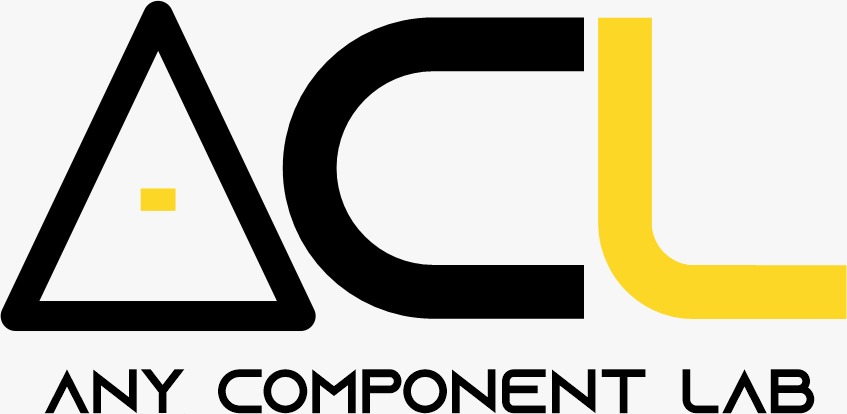Welcome to another exciting piece on electronics. In this series, we’ll be discussing microcontrollers: what they are, the various types, and their uses. Be sure to stay tuned until the end. Let’s dive in.
What are Microcontrollers?
As the name suggests, a microcontroller is a miniature controller. It is an integrated circuit housing various components such as a microprocessor, timers, counters, input/output (I/O) ports, random access memory (RAM), read-only memory (ROM), and additional elements. These parts work together to execute a pre-programmed set of specific tasks. Thus, a microcontroller is like a little computer that processes and executes control in an electronic device. Essentially, a microcontroller gathers input, processes this information, and outputs a certain action based on the information gathered.
Just as the human brain is the body’s control and command center, which manages all the functions of the body, so is the microcontroller in electronic devices. The brain receives information (input) from sight, sound, smell, taste, and touch, interprets and processes it, and sends out a corresponding response (output) to different body parts.
Now, say you’re watching TV and you want to change the channel or adjust the volume. The TV remote control receives commands (input) from the user (button presses), processes those commands (interpreting the signals), and then sends instructions to the TV (output) to change channels or adjust volume. That’s just how a microcontroller works.
Elements in Microcontrollers
As mentioned earlier, a microcontroller is like a little computer. Like a computer, it has different parts that work together to make it function. Let’s take a look at these elements.

- Central Processing Unit (CPU):

The CPU in a microcontroller serves as the core component responsible for executing instructions and processing data. It interprets instructions from the program memory, performs arithmetic and logic operations, and manages input/output operations. In essence, the CPU acts as the brain of the microcontroller, orchestrating its functions and operations.

- Memory:
Microcontrollers have two types of memories: the program memory and the data memory.
The program memory retains data even without power, making it non-volatile. This type of memory stores program code, configuration settings, and other essential data that must remain intact even during power loss or microcontroller resets. Examples of non-volatile memory include ROM (read-only memory) and flash memory.
Data memory, on the other hand, can either be volatile or non-volatile, depending on the specific requirements of the application and the type of memory technology used. Comparatively, volatile memory is fast and efficient for temporary data storage during program execution. It commonly stores variables, intermediate results, and program instructions that require quick access and modification. An example of volatile memory is RAM (random-access memory).
Recent microcontrollers utilize flash memory for program storage, while data memory comprises SRAM (volatile) and EEPROM (non-volatile).
- Input / Output (I/O) Ports
I/O ports or pins allow the microcontroller to monitor, control, and interact with the external world, including sensors, actuators, and other devices. They are used for exchanging data and signals between external devices and a microcontroller.

- Interrupts
An interrupt is a signal or prompt to the CPU of a microcontroller to stop work on one process and start work on another. The microprocessor responds to that interrupt with an ISR (Interrupt Service Routine), which is a short program to instruct the microprocessor on how to handle the interrupt. There are two types of interrupts: hardware interrupt and software interrupt. Buttons, sensors, serial communication, or other peripherals trigger the hardware interrupt by sending the interrupt request signal. On the other hand, the software interrupt occurs by executing a dedicated instruction.
- Serial Communication:
Serial communication is a form of I/O that is used either to control or receive data from an embedded microprocessor. It allows a microcontroller to connect with another microcontroller or a PC using a serial cable. Currently, most MCU-to-peripheral connections are serial. Some microcontrollers have built-in hardware called USART (universal synchronous-asynchronous receiver-transmitter) to implement a serial communication interface.
- Timers/Counters:
Timers measure specific time intervals. They keep a record of time for different events occurring in embedded systems. It can be very helpful to know the duration of a program’s execution or the elapsed time since its initiation. For scheduled tasks, configuring a timer to prompt interruptions at set intervals proves beneficial. These interruptions are utilized for updating displays, monitoring sensor inputs, and more. Timers serve a crucial role in generating PWM signals, facilitating control over motor speed, LED brightness, and similar parameters. Additionally, they synchronize events, both internally and with external devices.
- Analog-to-Digital Converter (ADC)
Sensors measure sound, light, temperature, movement, and other environmental phenomena using an analog system. The sampled value is analog data. But computers and processors cannot analyze and process the analog data from the sensors. Therefore, an intermediate device is needed to convert the analog data into digital data in order to communicate with digital processors like microcontrollers and microprocessors. Analog-to-Digital Converters, as the name implies, convert continuous analog signals into digital signals that are meaningful to the microprocessor.
- Digital-to-Analog Converter (DAC)
Computers typically use digital signals to represent data. This data is coded in bits. In the real world, most of the data available is analog in nature. However, computers lack the capability to directly produce analog signals. That is why it is essential to connect a DAC to the computer (microprocessor) to convert digital signals into analog signals usable by electronic devices.

How a Microcontroller works
A microcontroller works like a tiny brain inside a device. Essentially, it interprets data, executes commands, and regulates functions based on programmed instructions. It functions by using its key components: a central processing unit (CPU), memory, input/output (I/O) peripherals, and a clock.
The CPU executes instructions stored in memory, which include program code, data, and configuration settings. Through I/O peripherals, the microcontroller interacts with external components such as sensors and displays. The clock ensures precise timing of operations and can be adjusted for optimal performance.
When powered on, the microcontroller executes stored code, either pre-programmed or loaded later. It reads input from sensors, processes data, and controls output devices like motors or displays in real time. This real-time operation is advantageous for applications requiring rapid response, such as robotics and automation.
Well done! Now, we know what a microcontroller is and the elements it is comprised of. Be sure to stay tuned to this blog to join us in our next article, where we will discuss the types of microcontrollers and their uses.
Until next time, stay inquisitive and don’t stop tinkering!



